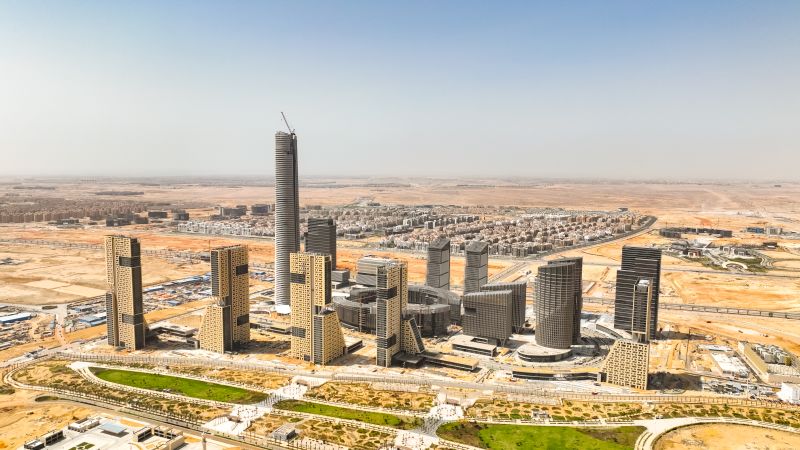In the vast desert landscape 30 miles east of Cairo, Egypt, a new city is emerging. With the tallest tower in Africa and the largest cathedral in the Middle East already standing tall, this city is part of a series of ambitious megaprojects spearheaded by President Abdel Fattah el-Sisi to boost the country’s economy.
The construction of the “New Administrative Capital” began in 2016 and is progressing in phases, according to Khaled Abbas, the chairman of the Administrative Capital for Urban Development (ACUD), the organization overseeing the project. Phase one is nearing completion, and phase two is scheduled to commence in the last quarter of this year.
Life is gradually seeping into the city, with over 1,500 families already settled in, a number expected to rise to 10,000 by the end of 2024. With government ministries relocating to the new city, approximately 48,000 government employees are currently working there, commuting from eastern Cairo via an electric train inaugurated last year. As the parliament begins operating from the city and more businesses and banks shift their headquarters, additional residents are anticipated to move in.
Abbas envisions that eventually, the entire country will be managed from the new capital. Phase one of the project cost around 500 billion Egyptian pounds ($10.6 billion), with the total estimated cost of the project being $58 billion, funded by ACUD and proceeds from land sales. However, some reports suggest the project is costing the state billions.
Critics express concerns about the project’s expenditure during Egypt’s economic downturn and escalating pressures from the Gaza conflict. International funding, including from organizations like the World Bank and the International Monetary Fund, is supporting Egypt’s economy. The IMF has increased its loan program for Egypt to $8 billion, subject to economic reforms aimed at curbing inflation and maintaining debt sustainability.
ACUD, jointly owned by the military and the housing ministry, assures that the project will proceed despite external financial support. The city’s master plan for phases two, three, and four has been awarded to a global architecture and engineering firm, Dar. The second phase is estimated to cost around 300 billion Egyptian pounds ($6.4 billion).
The New Administrative Capital revolves around a financial district where international banks and businesses will establish their global headquarters. Afreximbank and a consortium of UAE and South African companies have announced plans to set up their operations in the city.
Abbas believes that the advanced infrastructure of the city will attract businesses, emphasizing smart city features like an AI system for utility optimization, high-speed connectivity with optical fiber and 5G, and top-tier security services with extensive surveillance monitoring.
The city’s innovative design aims to serve as a model for smart cities and sustainability, hoping to contribute to Africa’s economic growth. However, experts like Nicholas Simcik Arese caution that the economic benefits may primarily accrue to a limited segment of the population and raise concerns about the new city’s potential impact on Cairo’s social structure.
The decision to build a new capital has been justified by the need to accommodate Egypt’s expanding population, alleviate Cairo’s congestion and pollution, and provide more green spaces. The new city promises a vast park, the “Green River,” double the size of New York City’s Central Park, though concerns emerge about water scarcity in the arid landscape.
Despite Cairo’s overcrowding, some critics argue that instead of constructing a new city, investments should be directed towards existing housing stock to alleviate congestion.
Abbas assures that the new city will offer a quality of life comparable to Cairo but in a modern, sustainable environment. The vision is to cater to all sections of society while providing a smart, green, and livable urban experience.
